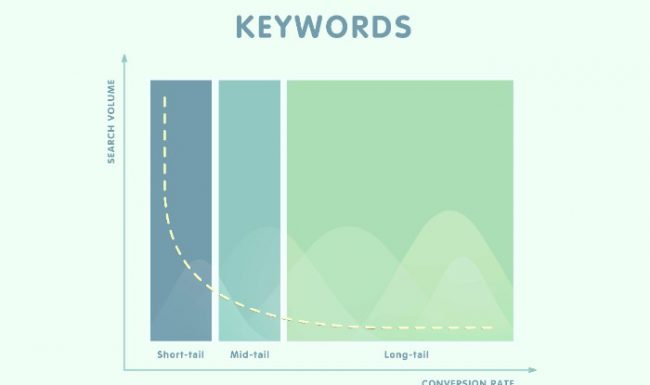
As a dentist or dental practice owner, you know how important it is to have a strong online presence to attract new patients. That’s where SEO (Search Engine Optimization) comes in, and one of its most critical aspects is content relevance.
Content relevance is all about creating content that’s valuable and meaningful to your target audience – in this case, potential dental patients. When your content is relevant, search engines like Google will see your website as a valuable resource and rank it higher in search results. This, in turn, drives more organic traffic to your site and ultimately increases the number of patients coming through your door.
Statistics show that 77% of patients use search engines to find a healthcare provider. If your dental practice isn’t ranking high in search results, you’re missing out on a huge opportunity to grow your patient base.
Our goal is to provide you with a step-by-step guide on how to improve content relevance in your dental practice’s SEO strategy. By the end of this resource, you’ll be able to:

Now that we’ve covered the importance of content relevance, let’s dive deeper into what SEO and content relevance are and why they matter for dental practices.
SEO (Search Engine Optimization) is the process of optimizing your website to rank higher in search engine results, making it easier for potential patients to find your dental practice online [1]. Content relevance is a crucial aspect of SEO. It refers to how closely your content matches the needs and interests of your target audience – potential dental patients in your case.

To ensure your content is relevant, consider these key factors:

In this section, we’ll dive into dentist keyword research, a crucial step in creating relevant content for your dental practice. By identifying the right keywords, you can optimize your content for better search rankings.
Step 1: Use keyword research tools
There are many tools available to help you find relevant keywords. Some popular ones include:
Step 2: Analyze your competitors
Examine the keywords your competitors are ranking for to identify potential opportunities. Use tools like SEMrush or Ahrefs to analyze their top-ranking pages.
Step 3: Consider long-tail keywords
Long-tail keywords are longer, more specific phrases with lower search volume but often higher conversion rates. For example, instead of targeting “dentist,” try “emergency dentist near me.”
Step 1: Focus on local keywords
As a dental practice, you want to target patients in your area. Include location-specific keywords, like “dentist in [city name]” or “teeth whitening in [city name].”
Step 2: Target dental services and procedures
Identify the services and procedures your practice offers, such as “dental implants,” “orthodontics,” or “root canal treatment.”
Step 3: Consider user intent
Identify keywords that match the intent of potential patients. For example, “cost of dental implants” or “best pediatric dentist near me.”
Step 4: Prioritize your keywords
Once you have a list of keywords, prioritize them based on search volume, competition, and relevance to your practice. Focus on high-value keywords that can drive traffic and conversions.

In this section, we’ll explore how to create content that resonates with your audience, helps you rank higher in search results, and ultimately brings more patients to your dental practice.
Step 1: Know your audience
Understand the demographics, needs, and preferences of your potential patients. Create buyer personas to help guide your content creation.
Step 2: Address common questions and concerns
Create content that answers common questions and addresses concerns your potential patients might have, such as dental anxiety, treatment costs, or insurance coverage.
Step 3: Make it informative and educational
Educate your audience about dental health, procedures, and treatments. Offer helpful tips, such as proper brushing techniques or foods to avoid for better oral health.
Step 1: Use keywords in strategic places
Include your target keywords in the title, headings, meta description, and within the content. Remember not to overdo it – keyword stuffing can hurt your SEO.
Step 2: Use synonyms and related terms
Incorporate synonyms and related terms to make your content sound more natural and avoid repetition.
Step 3: Write for humans, not search engines
Ensure your content reads naturally and is easy to understand. Write for your audience first, and search engines second.

Now that we’ve covered content creation, let’s discuss optimizing on-page SEO elements. These are crucial to help search engines understand and rank your content effectively.
Step 1: Write unique title tags
Create unique and descriptive title tags for each page, incorporating your target keywords. Keep them under 60 characters to ensure they display fully in search results.
Step 2: Craft compelling meta descriptions
Write enticing meta descriptions that encourage users to click on your page. Include your target keywords and keep them under 155 characters.
Step 3: Use header tags strategically
Organize your content using header tags (H1, H2, H3, etc.). Include your target keywords in the headers to highlight the content’s relevance.
Step 1: Compress images
Reduce the file size of your images using tools like TinyPNG or ImageOptim to improve page load speed.
Step 2: Add descriptive alt text
Write descriptive alt text for your images, incorporating relevant keywords. This helps search engines understand the image content and improves accessibility for visually impaired users.
Step 1: Build internal links
Create links within your content that connect to other relevant pages on your website. This helps search engines understand your site’s structure and keeps visitors engaged.
Step 2: Link to high-quality external sources
Link to reputable, authoritative websites to support your claims and provide additional information. This signals to search engines that your content is trustworthy and well-researched.

In this section, we’ll address common content relevance mistakes and how to avoid them. Steering clear of these pitfalls will help improve your SEO and provide a better experience for your audience.
Mistake: Overusing keywords to the point that content becomes unreadable and unnatural.
Solution:
Mistake: Creating content that is too short, lacks substance, or doesn’t provide value to the reader.
Solution:
Mistake: Focusing solely on keywords without considering the purpose behind users’ searches.
Solution:

Let’s dive into some best practices for ensuring content relevance in dental SEO. Follow these tips to create a winning content strategy that drives traffic and boosts your online presence.
Step 1: Audit your content
Regularly review your existing content to identify outdated information, broken links, or areas for improvement.
Step 2: Refresh and update
Add new information, statistics, or visuals to keep your content fresh and relevant. Don’t forget to update your meta data as well.
Step 3: Repurpose and promote
Consider repurposing high-performing content into different formats (e.g., turn a blog post into a video or infographic) and reshare it on your social channels.

Step 1: Enable comments
Allow users to leave comments on your content, fostering a sense of community and encouraging engagement.
Step 2: Respond to comments
Take the time to reply to comments and answer questions, building trust and rapport with your audience.
Step 3: Add social sharing buttons
Make it easy for users to share your content on social media by adding prominent sharing buttons to your website.
Step 1: Set up analytics tools
Use tools like Google Analytics to track user behavior and measure the success of your content.
Step 2: Monitor key metrics
Pay attention to metrics like organic traffic, bounce rate, and conversion rate to gauge content effectiveness.
Step 3: Adjust your strategy

Let’s dive into how to measure the success of your dental practice’s content strategy and adjust it based on data and insights. Remember, SEO is an ongoing process, and improvement is the name of the game!
To evaluate your content’s performance, focus on these key metrics:
Use tools like Google Analytics to track these metrics and gain valuable insights.
Once you’ve analyzed your metrics, make adjustments to your strategy:
Remember, SEO is a long-term commitment. Continually analyze your performance and make data-driven adjustments to stay ahead of the competition!

SEO is ever-changing, so staying informed and adapting to new trends is essential for your dental practice’s success. Let’s look at how to keep up with the latest news and techniques in the industry.
Stay in the loop by following these trusted sources:
Subscribe to their newsletters or follow them on social media to stay updated!
To stay ahead in the SEO game, be ready to embrace new trends:
By staying informed and adapting to SEO changes, you’ll ensure your dental practice remains competitive and continues to attract new patients. Keep learning, and you’ll be unstoppable!

Next, we’ll explore examples of dentist SEO case study to illustrate key content relevance concepts. We’ll analyze their strategies and see what lessons we can learn from their success.
SmilePerfect Dental consistently publishes high-quality, relevant content on their blog, catering to their target audience’s needs.
HappyTeeth Pediatric Dentistry excels in creating shareable content that resonates with parents.
DentalCare Clinic has a content strategy focused on local SEO, helping them stand out in their community.

Now we’ll tackle some common questions about content relevance and SEO for dental practices. These answers will help clarify any lingering doubts and offer additional insights.
Q: How do I know if my content is relevant to my target audience?
A: Start by conducting keyword research to understand what your audience is searching for. Then, create content that addresses their concerns and questions. Monitor engagement metrics like comments, shares, and time on page to gauge if your content resonates with them.
Q: Can I use the same keywords as my competitors?
A: While it’s helpful to research your competitors’ keywords, it’s essential to focus on your unique selling points and create content that showcases your expertise. Aim for a mix of common industry keywords and niche keywords that highlight your practice’s strengths.
Q: How often should I update my dental practice’s content?
A: Regularly auditing and updating your content is crucial. Aim to review your content at least once a year to ensure it remains fresh and relevant. Update information, fix broken links, and improve readability to keep your content up-to-date and valuable.
Q: How do I integrate keywords into my content without it sounding forced?
A: Write your content with your audience’s needs in mind, and then naturally weave in your target keywords. Avoid keyword stuffing and focus on readability and value. A helpful tip is to use synonyms and related terms to create a more organic and conversational flow.
Q: How important is local SEO for dental practices?
A: Local SEO is vital for dental practices, as most patients search for dentists near them. Optimize your content with local keywords, claim your Google My Business listing, and build local citations to improve your online visibility and attract potential patients.
We’ve covered a lot of ground together in this guide, so let’s take a moment to recap the most important points:
It’s been a pleasure guiding you through the exciting world of dental SEO. With your newfound knowledge and skills, you’re well on your way to attracting more patients and growing your practice. Remember, the key to success is consistent effort and continuous learning. Keep up the great work, and you’ll see fantastic results!
Here’s to your dental practice’s SEO success!